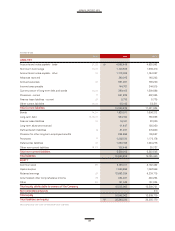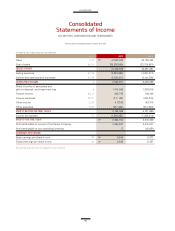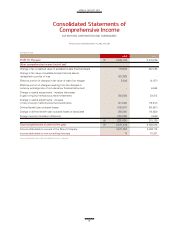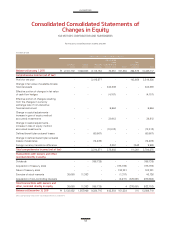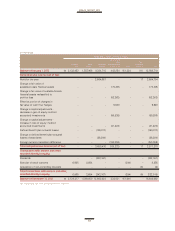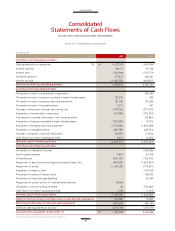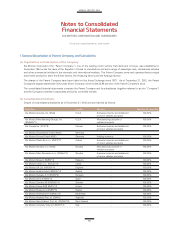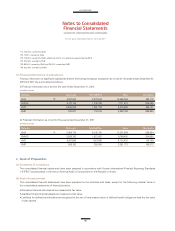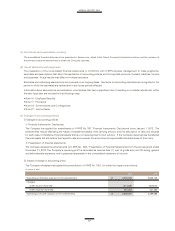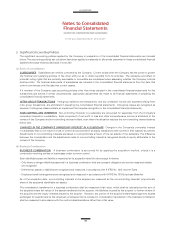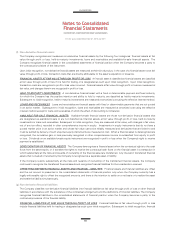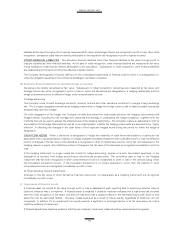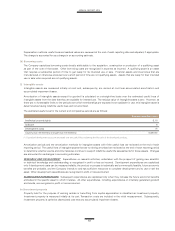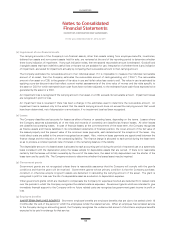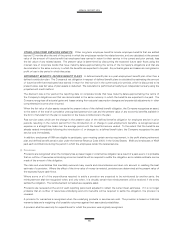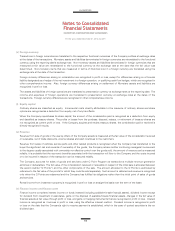Kia 2012 Annual Report Download - page 59
Download and view the complete annual report
Please find page 59 of the 2012 Kia annual report below. You can navigate through the pages in the report by either clicking on the pages listed below, or by using the keyword search tool below to find specific information within the annual report.
Acquisition-related costs are costs the acquirer incurs to effect a business combination. Those costs include finder’s fees;
advisory, legal, accounting, valuation and other professional or consulting fees; general administrative costs, including the costs of
maintaining an internal acquisitions department; and costs of registering and issuing debt and equity securities. Acquisition-related
costs, other than those associated with the issue of debt or equity securities, are expensed in the periods in which the costs are
incurred and the services are received. The costs to issue debt or equity securities are recognized in accordance with K-IFRS
No.1032 Financial Instruments: Presentation and K-IFRS No.1039 Financial Instruments: Recognition and Measurement
.
GOODWILL Goodwill derived from business combinations occurred is as the fair value of the consideration transferred including
the recognized amount of any non-controlling interest in the acquiree, less the net recognised amount of the identifiable assets
acquired and liabilities assumed, all measured as of the acquisition date. When the excess is negative, bargain purchase gain
is immediately recognize in statements of income for the period. Goodwill is subsequently measured at cost less accumulated
impairment losses.
Acquisition of non-controlling interests is accounted for intercompany transaction, and related goodwill is not recognized.
(c) Associates and jointly controlled entities
An associate is an entity in which the Company has significant influence, but not control, over the entity’s financial and operating
policies. Significant influence is presumed to exist when the Company holds between 20 and 50 percent of the voting power of
another entity.
Joint ventures are those entities over whose activities the Company has joint control, established by contractual agreement, and
require unanimous consent for strategic financial and operating decisions.
The investment in an associate is initially recognized at cost and the carrying amount is increased or decreased to recognize the
Company’s share of the profit or loss and changes in equity of the associate after the date of acquisition. Intra-group balances and
transactions, and any unrealized income and expenses arising from intra-group transactions, are eliminated in preparing the
consolidated financial statements. Intra-group losses recognized as expense if intra-group losses indicate an impairment that
requires recognition in the consolidated financial statements.
If an associate uses accounting policies different from those of the Company for like transactions and events in similar
circumstances, appropriate adjustments are made to its financial statements in applying the equity method.
When the Company’s share of losses exceeds its interest in an equity accounted investee, the carrying amount of that interest,
including any long-term investments, is reduced to nil and the recognition of further losses is discontinued except to the extent
that the Company has an obligation or has to make payments on behalf of the investee for further losses.
(d) Cash and cash equivalents
Cash and cash equivalents comprised of cash on hand, demand deposits and short-term, highly liquid investments that are readily
convertible to known amounts of cash and which are subject to an insignificant risk of changes in value.
(e) Inventories
Inventories are measured at the lower of cost or net realizable value. The cost of inventories is determined based on the specific
identification method for materials-in-transit and moving-average method for all other inventories, and includes expenditure incurred
in acquiring the inventories, production or conversion costs and other costs incurred in bringing them to their existing location and
condition.
When inventories are sold, the carrying amount of those inventories is recognized as cost of goods sold in same period as the
related revenue. Net realizable value is the estimated selling price in the ordinary course of business, less the estimated costs of
completion and selling expenses. The amount of any write-down of inventories to net realizable value and all losses of inventories
are recognized as an expense in the period the write-down or loss occurs. The amount of any reversal of any write-down of
inventories, arising from an increase in net realizable value, are recognized as a reduction in the amount of inventories recognized
as an expense in the period in which the reversal occurs.


